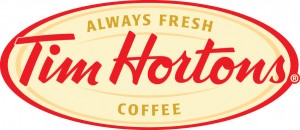TOMS is a shoe company founded by Blake Mycoskie who, after visiting Argentina and seeing children walking barefoot, putting themselves in danger of getting cuts and being vulnerable to diseases and infections, was inspired to start TOMS. TOMS is famous for their motto “With every pair you purchase, TOMS will give a pair of new shoes to a child in need. One for One”. Knowing this, customers are more inclined to buy these products because they feel like they are giving back and find comfort knowing that they are providing the means of transportation for one child.
This type of marketing strategy works quite well because the brand is able to give customers an incentive to buy their products. Consumers get a feeling of satisfaction knowing that they are helping others. Because of this, they are able to disregard the price, even though the price one pays for TOMS is overpriced considering the fabric and quality of the shoe itself. TOMS bases its company on social responsibility and allows its customers to spend money with a good conscience. Buying TOMS means more than buying another pair of shoes. It means you are giving someone else a better future.
Articles: http://www.huffingtonpost.com/2013/03/20/questioning-the-toms-shoe_n_2915003.html
http://planetforward.ca/blog/toms-shoes-redefining-social-responsibility/



